Natural Resources - Technology, Economics & Policy
Section 1: Introduction 1.1 Symbiotic relationship between mangroves and coastal communities 1.2 Earth system science for global sustainability 1.3 "Virtual" natural resources 1.4 Natural resources and globalization 1.4.1 General considerations 1.4.2 Different aspects of globalisation 1.4.3 Natural resources and violent conflicts 1.5 Innovation chain and economic growth References Section 2: Water resources management 2.1 Holistic water resources management, based on the hydrological cycle (U. Aswathanarayana) 2.1.1 Introduction - water and culture 2.1.2 Water balance 2.1.3 Green and blue waters 2.1.4 Conjunctive use of water resources 2.1.5 Water resources endowments of countries 2.1.6 Decision - Support system for water resources management 2.1.7 Paradigm of global water resources management 2.1.8 How best to use water resources - India as a case References 2.2 Economic frameworks to inform decision-making (U. Aswathanarayana, India) 2.2.1 An integrated economic approach to water scarcity 2.2.2 Role of the private sector in the water resources management 2.2.3 Tools for policy makers 2.2.4 Quo vadis? References 2.3 Multiple perspectives on water: A synthesis (Ramaswamy R. Iyer) 2.3.1 Nature of water 2.3.2 Perspectives on water References 2.4 Water pollution (U. Aswathanarayana) 2.4.1 Pathways of pollution 2.4.2 Activities that can cause groundwater pollution 2.4.3 Leachates from solid wastes, source-wise 2.4.4 Pollution from liquid wastes, source-wise 2.4.5 Contaminants, type-wise 2.4.6 Anthropogenic acidification of waters 2.4.7 Water pollution arising from waste disposal 2.4.8 Transport of contaminant solutes in aquifers References 2.5 Sequential use of water resources (U. Aswathanarayana) 2.5.1 Water quality in relation to water use 2.5.2 Estimates of water value for different uses 2.5.3 Water value in system context 2.5.4 Price coordination of water supplies 2.5.5 Principles of optimization 2.5.6 Price coordination of a typical irrigation system 2.5.7 Optimization methods in water management 2.5.8 Allocation of water to competing users 2.5.9 Decision-making process References 2.6 Wastewater reuse systems (U. Aswathanarayana) 2.6.1 Introduction 2.6.2 Bio-pond treatment of waste water 2.6.3 Types of wastewater reuse 2.6.4 Use of wastewater in irrigation 2.6.5 Geopurification 2.6.6 Economics of wastewater reuse 2.6.7 Health hazards in wastewater reuse 2.6.8 Use of sewage sludge as fertilizer References 2.7 Etiology of diseases arising from toxic elements in drinking water (U. Aswathanarayana) 2.7.1 Routes and consequences of ingestion of toxic elements 2.7.2 Arseniasis 2.7.3 Fluorosis 2.7.4 Risk assessment References 2.8 Water and agriculture: Usefulness of agrometeorological advisories (L.S. Rathore, N. Chattopadhyay & S.V. Chandras) 2.8.1 Introduction 2.8.2 Impact of climatic variability on agricultural water challenges 2.8.3 Usefulness of agro-climatic information in water use 2.8.4 Farmer-customized agrometeorological advisories 2.8.5 Integration of agro-climatic resources with agricultural inputs 2.8.6 Projection of water status in Indian agriculture under future climate change scenario 2.8.7 How to produce more food (through optimization of soil-water-plant system) 2.8.8 How to do with less water (in agriculture, industry and domestic purposes) 2.8.9 Conclusion References 2.9 Remote sensing in water resources management (Venkat Lakshmi, USA) 2.9.1 Background and societal importance 2.9.2 Current monitoring methodologies 2.9.3 Land surface modeling and data assimilation References 2.10 Case history and exercises (B. Venkateswararao & V. Varalakshmi) 2.10.1 Introduction 2.10.2 Description of the study area 2.10.3 Rainfall analysis of the catchment area 2.10.4 Analysis of inflows to the reservoirs 2.10.5 Verification of the cropping area in the catchments 2.10.6 Water table contour maps and analysis 2.10.7 Discussion on hydrographs of observation wells 2.10.8 Composite hydrographs of piezometer wells 2.10.9 Rainfall and water level rise relationship 2.10.10 Influence of premonsoon groundwater levels over the recharge of rainfall water to the ground 2.10.11 Implications of the study and conclusions References Exercises 2.11 Basic research and R&D (B. Rajagopalan & C. Brown, USA) 2.11.1 Background - Traditional water resources management 2.11.2 New paradigm for water resources management 2.11.3 R&D for managing water resources under uncertainty 2.11.4 Colorado river management - Case study References Section 3: Mineral resources management (U. Aswathanarayana) 3.1 Introduction 3.1.1 Environmental challenges facing the mining industry 3.1.2 Mining, environmental protection and sustainable development 3.1.3 Economics of environmental protection in mining 3.1.4 Technology trends in the mining industry 3.1.5 Automation in the mining industry 3.1.6 Technology-driven developments in the mining industry 3.2 Mineral demand in response to emerging technological needs 3.2.1 Emerging technological needs 3.2.2 Rare earth elements 3.2.3 Gold 3.2.4 Aluminium 3.2.5 Copper 3.2.6 Lead 3.3 Control technologies for minimizing the environmental impact of mining 3.3.1 Acid mine drainage 3.3.2 Tailings disposal 3.3.3 Dust control technologies 3.3.4 Low-waste technologies 3.3.5 Treatment of wastewater 3.3.6 Subsidence 3.3.7 Noise and vibration 3.3.8 Planning for mine closure 3.4 Health and socioeconomic impacts of the mining industry 3.4.1 Health hazards of the mining industry 3.4.2 Health hazards due to dusts 3.4.3 Matrix diagrams 3.4.4 Total project development - A visionary approach 3.5 Artisanal mining 3.6 Ways of ameliorating the adverse consequences of mining industry 3.6.1 Rehabilitation of mined land 3.6.2 Beneficial use of mining wastes 3.6.3 Reuse of mine water 3.7 Iron ore mine of Kiruna, Sweden - A case study 3.8 Basic research and R&D References Section 4: Energy resources management (U. Aswathanarayana) 4.1 Coal resources 4.1.1 Importance of coal in the energy economy 4.1.2 Environmental impact of the coal cycle 4.1.3 Wastes from coal industries 4.1.4 Power generation technologies 4.1.5 China - a country case study 4.2 Oil and gas resources 4.2.1 Oil 4.2.2 Natural gas 4.2.3 Shale gas 4.2.4 Saudi Arabia - a country case study 4.3 Nuclear fuel resources 4.3.1 Introduction 4.3.2 Resource position 4.3.3 Cost of nuclear power 4.3.4 Projected nuclear power capacity 4.3.5 New reactor designs 4.3.6 R&D areas 4.3.7 Country case study of France 4.4 Renewable energy resources 4.4.1 Why renewables? 4.4.2 Renewable energy sources 4.5 Strategy for a low-carbon footprint 4.5.1 Carbon emissions and climate change 4.5.2 Mitigation of climate change 4.6 Exercises References Section 5: Bioresources and biodiversity (S. Balaji) 5.1 Introduction 5.2 What is biodiversity? 5.2.1 Endemism and keystone species 5.3 Why conserve biodiversity 5.4 Global biodiversity resources 5.5 Erosion of biodiversity 5.5.1 Causes for the erosion of biodiversity 5.5.2 Habitat loss 5.5.3 Invasive alien species 5.5.4 Pollution 5.5.5 Human population 5.5.6 Overexploitation 5.5.7 Arresting biodiversity loss 5.6 Climate change and biodiversity 5.6.1 Role of forests in climate change mitigation 5.7 Role of biodiversity in medicine, agriculture and forestry 5.7.1 Biodiversity in medicine 5.7.2 Agro-biodiversity 5.7.3 Biodiversity and forestry 5.8 Biodiversity and biotechnology 5.8.1 Biotechnology for biodiversity assessment 5.8.2 Biodiversity utilization 5.8.3 Impacts 5.8.4 Biotechnology for prospecting genetic diversity 5.8.5 Genetically modified foods 5.8.6 Environmental biotechnology 5.8.7 Pragmatic use of biotechnology 5.9 Economics and policy of biodiversity management 5.9.1 Economics and policy 5.9.2 Tangible and intangible uses of biodiversity 5.9.3 Conservation strategy 5.10 Future prospects 5.10.1 The strategic plan - Aichi targets 2011-2020 5.10.2 Scope for future research 5.11 Conclusion: Living in harmony with nature 5.12 Exercises References Section 6: Disaster management (U. Aswathanarayana) 6.1 Hazardous events (natural, mixed and technological) 6.2 Vulnerability to hazardous events 6.2.1 Earthquakes 6.2.2 Tsunamis 6.2.3 Volcanic hazards 6.2.4 Slope failures, landslides and subsidence 6.3 Marine hazards 6.3.1 Introduction 6.3.2 Types of marine hazards 6.3.3 Natural hazards 6.3.4 Man-made hazards References 6.4 Nuclear energy sector accidents 6.4.1 The Three Mile Island (TMI) accident 6.4.2 Chernobyl reactor accident 6.4.3 Fukushima - Daiichi reactor accident 6.5 Integrated disaster preparedness systems 6.5.1 Dual use technologies and practices 6.5.2 Resiliency linked to social-ecological systems 6.5.3 Risk management through securitisation 6.5.4 Monitoring and warning systems 6.5.5 Science-based and people-based preparedness systems 6.5.6 Risk communication 6.5.7 Rehabilitation measures 6.6 Basic research and R&D References Section 7: Overview and Integration - Living in harmony with nature
{{comment.content}}

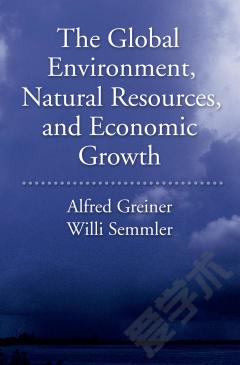
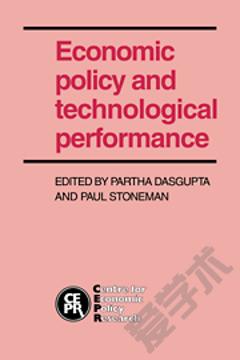
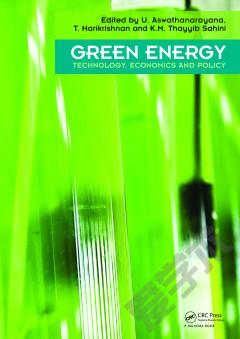
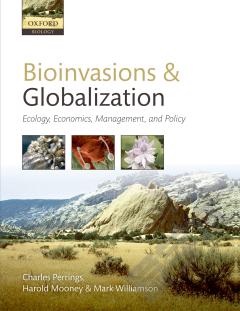

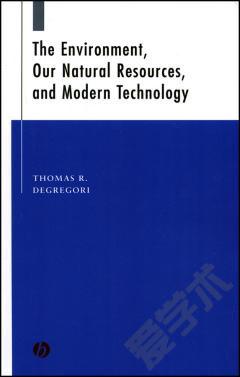

 京公网安备 11010802027623号
京公网安备 11010802027623号